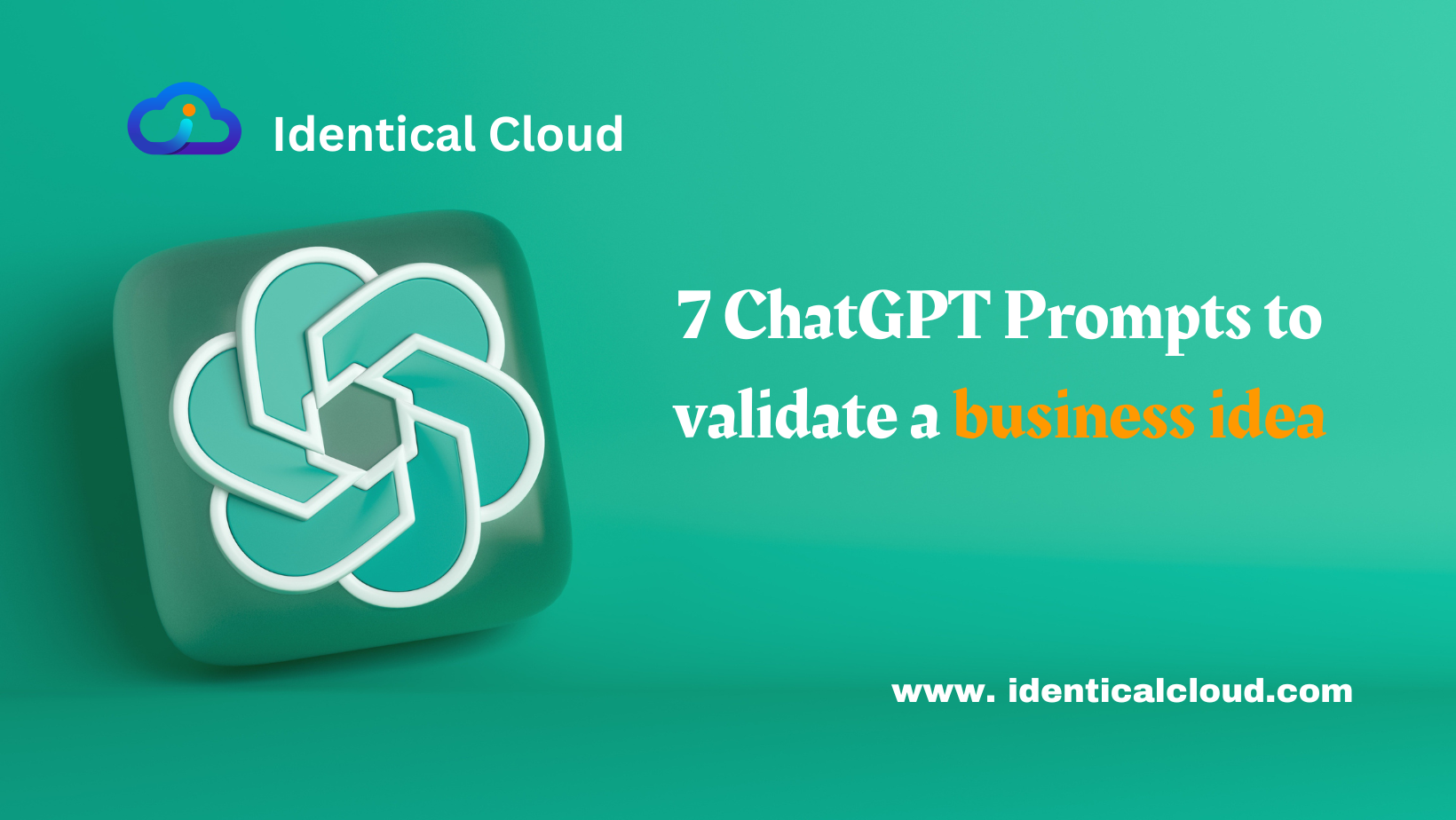
7 ChatGPT Prompts to validate a business idea
7 ChatGPT Prompts to validate a business idea
Turning a business idea into a successful venture requires more than just enthusiasm and passion. It requires a thorough validation process to ensure that your concept aligns with market needs and has the potential to thrive. Fortunately, with the advent of technology, tools like ChatGPT can play a significant role in helping you validate your business idea effectively.
In this blog, we’ll explore seven ChatGPT prompts that can guide you through the crucial process of validating your business idea.
1. Market Need and Problem Statement:
Before diving into the nitty-gritty of your business idea, it’s essential to understand the problem you’re solving and the market need you’re addressing. ChatGPT can help you craft a clear and compelling problem statement that resonates with your target audience. You can also use it to identify the specific pain points your potential customers are facing, making it easier to articulate the value your idea brings to the table.
2. Competitor Analysis:
In today’s competitive landscape, understanding your competitors is vital. ChatGPT can assist you in conducting a thorough analysis of existing businesses or solutions that tackle a similar problem. You can explore the strengths and weaknesses of your competitors and leverage ChatGPT to define what sets your idea apart. Highlighting your unique value proposition will be crucial when presenting your idea to potential investors or customers.
3. Customer Segmentation:
Identifying your ideal customer is a pivotal step in validating your business idea. By leveraging ChatGPT, you can define the demographics, psychographics, and behaviors of your target audience. This information helps you narrow down your focus and tailor your product or service to meet the specific needs of your customers. A well-defined customer segment enhances your marketing efforts and increases the chances of attracting the right audience.
4. Value Proposition:
Your value proposition is the core of your business idea. It’s the essence of what you offer and how it solves the problem for your customers. ChatGPT can help you craft a concise and compelling value proposition that highlights the benefits your idea brings to your customers. This clarity not only makes it easier to communicate your idea but also helps potential customers understand why they should choose your solution over others.
5. Minimum Viable Product (MVP):
The concept of a Minimum Viable Product (MVP) is crucial in the validation process. It allows you to test your idea with a basic version of your product or service before investing significant resources. With ChatGPT, you can define the key features and functionalities that your MVP should include. This iterative approach enables you to gather feedback from early users, helping you refine and improve your idea based on real-world usage.
6. Validation Strategy:
A well-structured validation strategy is essential for gauging the viability of your business idea. ChatGPT can help you design experiments, surveys, and tests to gather feedback from potential customers. You can outline the steps you’ll take to validate your idea and identify key metrics to measure success. A systematic validation approach reduces the risk of pursuing an idea that might not resonate with the market.
7. Revenue Model and Scalability:
Every business needs a clear revenue model to sustain itself. ChatGPT can assist you in defining your revenue streams, whether it’s through product sales, subscriptions, advertising, or other monetization strategies. Additionally, you can explore the scalability potential of your idea. How can your business grow over time? What strategies can you employ to expand your customer base and increase revenue?
In conclusion, validating a business idea is a critical step that can significantly impact the success of your venture. The seven ChatGPT prompts mentioned above provide a structured approach to guide you through the validation process. By leveraging technology to articulate your problem statement, analyze competitors, segment your customers, define your value proposition, create an MVP, plan a validation strategy, and outline your revenue model, you’ll be better equipped to make informed decisions and increase the likelihood of turning your business idea into a thriving reality.
